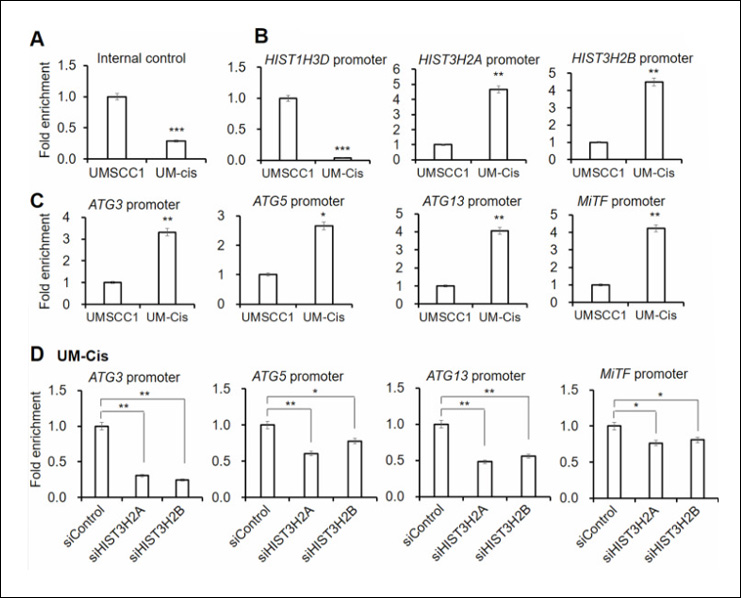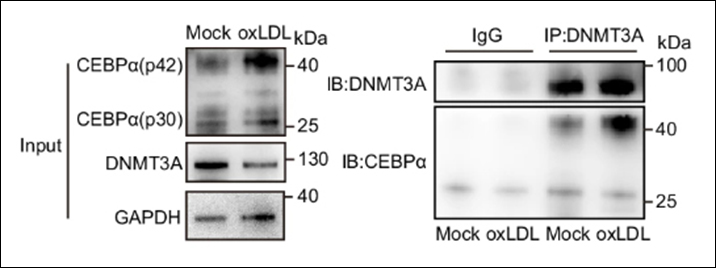Yung WS et. al. (November 2024). DNA Hypomethylation Is One of the Epigenetic Mechanisms Involved in Salt-Stress Priming in Soybean Seedlings Yung WS et. al. (November 2024).
This study investigates how DNA hypomethylation enhances salt-stress priming in soybean seedlings. Reduced DNA methyltransferase activity drives hypomethylation, promoting gene activation through chromatin modifications and supporting ABA-dependent stress responses. DNA methyltransferase inhibitors replicate these effects, highlighting hypomethylation's role in stress adaptation.
Products Used: EpiQuik Nuclear Extraction Kit, EpiQuik DNMT Activity/Inhibition Assay Ultra Kit (Colorimetric)
Johnson M et. al. (November 2024). Loss of SETD2 in wild-type VHL clear cell renal cell carcinoma sensitizes cells to STF-62247 and leads to DNA damage, cell cycle arrest, and cell death characteristic of pyroptosis Mol Oncol.
This study reveals that SETD2 loss in wild-type VHL clear cell renal cell carcinoma (ccRCC) sensitizes cells to STF-62247, a small molecule targeting late autophagy stages. In SETD2-deficient cells, STF-62247 induces DNA damage, S-phase cell cycle arrest, and pyroptosis, marked by caspase-3 and gasdermin E cleavage. These findings highlight SETD2 inactivation as a key factor in STF-62247 susceptibility, offering insights into ccRCC treatment strategies.
Products Used: EpiQuik Total Histone Extraction Kit
Lai J et. al. (November 2024). tRNA methyltransferase DNMT2 promotes hepatocellular carcinoma progression and enhances Bortezomib resistance through inhibiting TNFSF10 Cell Signal. :111533.
This study identifies the tRNA methyltransferase DNMT2 as a promoter of hepatocellular carcinoma (HCC) progression and resistance to the NF-κB inhibitor Bortezomib. High DNMT2 expression correlates with poor prognosis in liver cancer patients. DNMT2 suppresses the pro-apoptotic gene TNFSF10 by reducing FTO expression and increasing m6A methylation, enhancing cancer cell proliferation and metastasis. DNMT2 deletion sensitizes HCC cells to Bortezomib-induced apoptosis, suggesting DNMT2 as a potential therapeutic target for liver cancer.
Products Used: EpiQuik m6A RNA Methylation Quantification Kit (Colorimetric)
Zhao L et. al. (November 2024). m6A demethylase CpALKBH regulates CpZap1 mRNA stability to modulate the development and virulence of chestnut blight fungus mBio. :e0184424
This study reveals that the m6A demethylase CpALKBH regulates fungal development and virulence in Cryphonectria parasitica, the chestnut blight fungus. CpALKBH removes m6A modifications from RNA, and its deletion leads to increased m6A levels, reduced growth, sporulation, and virulence. CpALKBH stabilizes CpZap1 mRNA, a key transcription factor, in an m6A-dependent manner. Methylation at CpZap1 position 1935A is co-regulated by CpALKBH and the methyltransferase CpMTA1. These findings underscore the critical role of m6A modifications in fungal pathogenicity and development.
Products Used: EpiQuik m6A RNA Methylation Quantification Kit (Colorimetric)
Zhu X et. al. (November 2024). Downregulated KLF4, induced by m6A modification, aggravates intestinal barrier dysfunction in inflammatory bowel disease Cell Mol Life Sci. 81(1):470.
This study investigates the role of Krüppel-like factor 4 (KLF4) in intestinal epithelial barrier (IEB) function and its regulation by m6A modifications in inflammatory bowel disease (IBD). KLF4 expression was significantly reduced in IBD patients and colitis mouse models, correlating with worsened inflammation. KLF4 deletion aggravated colitis symptoms by impairing apical junction complex protein expression, increasing apoptosis, and enhancing oxidative stress. m6A modifications mediated by METTL3/ALKBH5/YTHDF2 were found to suppress KLF4 expression. Additionally, the KLF4 inducer APTO-253 improved IEB function, suggesting that targeting KLF4 could be a therapeutic strategy for IBD.
Products Used: EpiQuik CUT&RUN m6A RNA Enrichment (MeRIP) Kit
Wu T et. al. (December 2024). METTL3-mediated m6A modification regulates the polycomb repressive complex 1 (PRC1) components BMI1 and RNF2 in hepatocellular carcinoma cells Mol Cancer Res.
This study explores how METTL3-mediated m6A modification drives hepatocellular carcinoma (HCC) progression by regulating key components of the polycomb repressive complex 1 (PRC1). METTL3 promotes tumor growth and invasiveness in HCC by stabilizing the mRNAs of BMI1 and RNF2 through m6A modification and interaction with IGF2BP proteins. Knockdown of METTL3 reduces tumor proliferation in vitro and in vivo, and the METTL3 inhibitor STM2457 significantly inhibits HCC growth. These findings highlight the METTL3-m6A-BMI1/RNF2 axis as a potential therapeutic target for HCC treatment.
Products Used: EpiQuik CUT&RUN m6A RNA Enrichment (MeRIP) Kit
Wortzel I et. al. (December 2024). Unique structural configuration of EV-DNA primes Kupffer cell-mediated antitumor immunity to prevent metastatic progression Nat Cancer.
This study investigates the role of extracellular vesicle DNA (EV-DNA) in preventing liver metastasis in colorectal cancer. EV-DNA is located on the vesicle surface, linked with modified histones, and its packaging is regulated by genes like APAF1. Uptake of EV-DNA by Kupffer cells activates DNA damage responses, altering cytokine production and promoting tertiary lymphoid structures, which suppress metastasis. Loss of APAF1 reduces EV-DNA packaging, enhancing metastatic progression. EV-DNA secretion from cancer biopsies shows potential as a predictive biomarker for postoperative metastasis.
Products Used: ChromaFlash Chromatin Isolation & Shearing Kit
Carvalho A Jr et. al. (November 2024). The miR319-based repression of SlTCP2/LANCEOLATE activity is required for regulating tomato fruit shape Plant J.
This study investigates how miR319 regulates SlTCP2/LANCEOLATE (LA) activity to shape tomato fruit. In La mutants, loss of miR319 control causes early SlTCP2/LA expression, disrupting cell division in carpel development and resulting in elongated fruits with fewer seeds. SlTCP2/LA represses OVATE and reduces auxin responses by downregulating SlYUCCA4, while working with ENTIRE (E) to influence fruit morphology. These findings reveal a miRNA-based mechanism linking OVATE and auxin, potentially driving fruit shape diversity in Solanaceae.
Products Used: EpiQuik Plant ChIP Kit




 Cart (0)
Cart (0)













